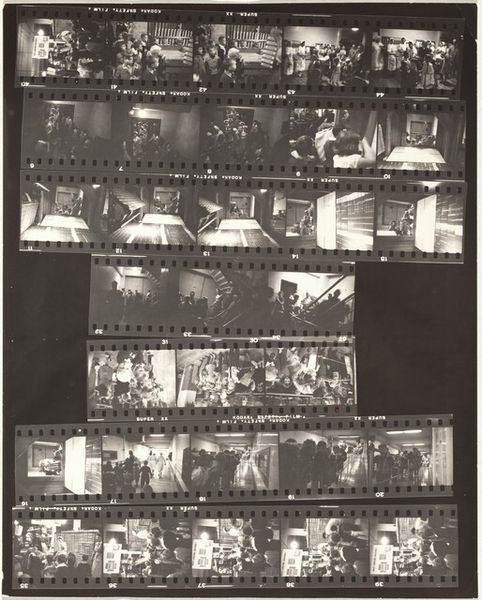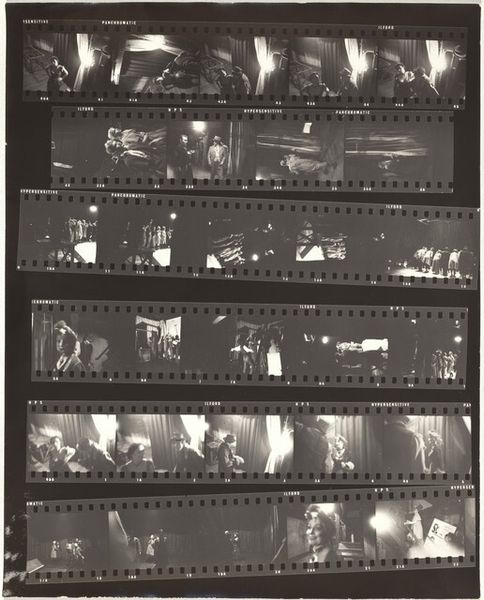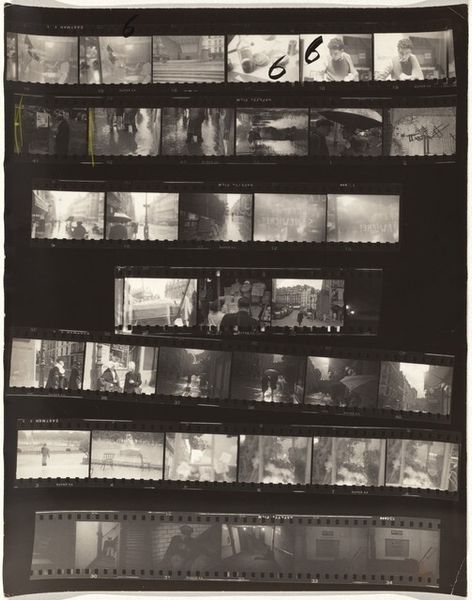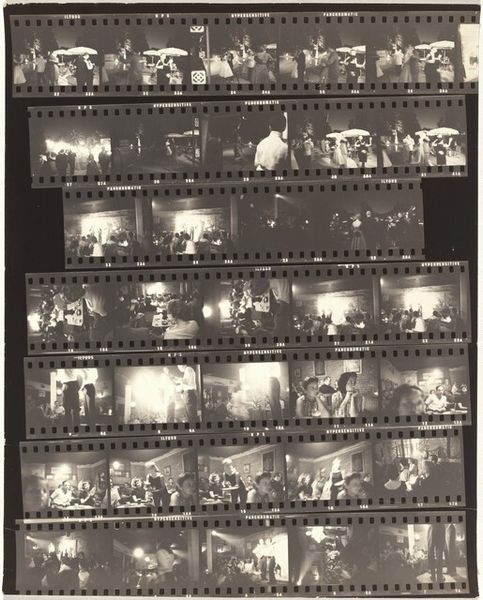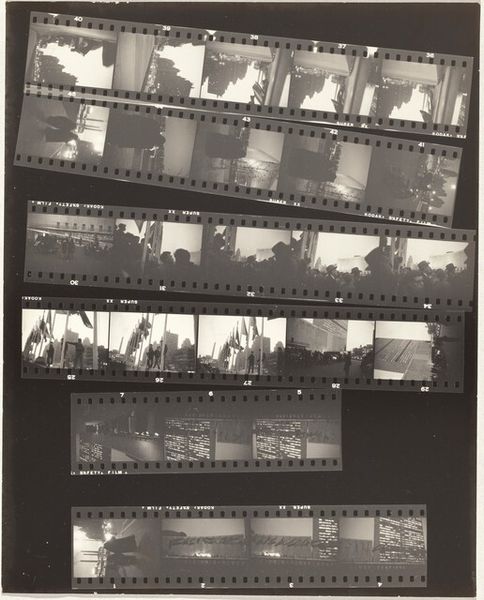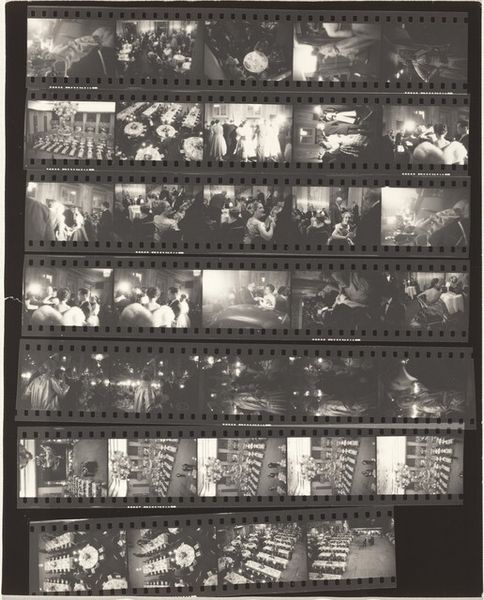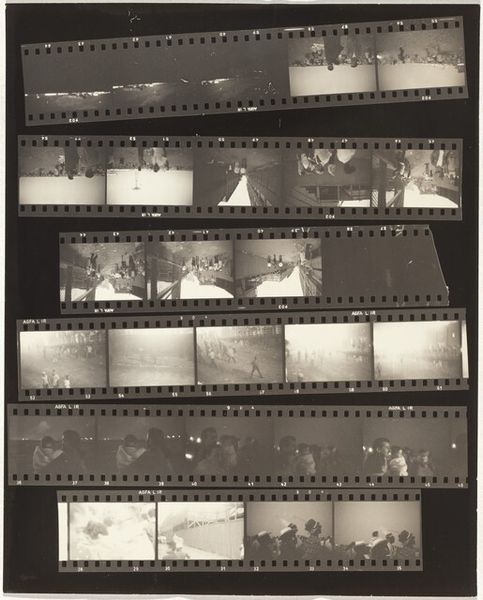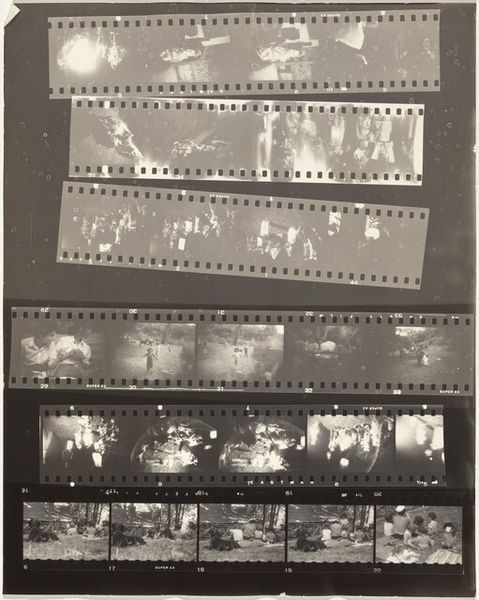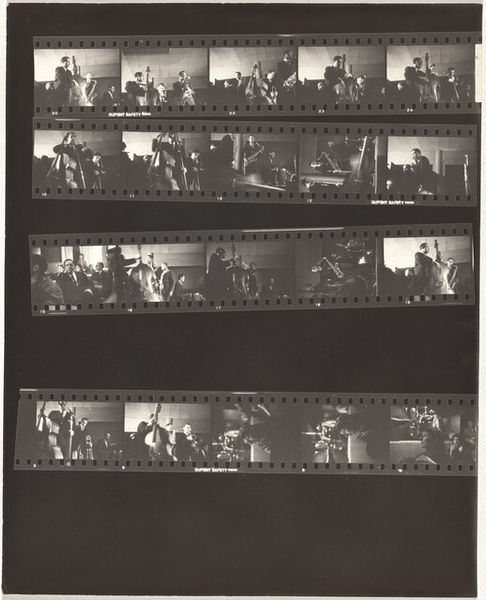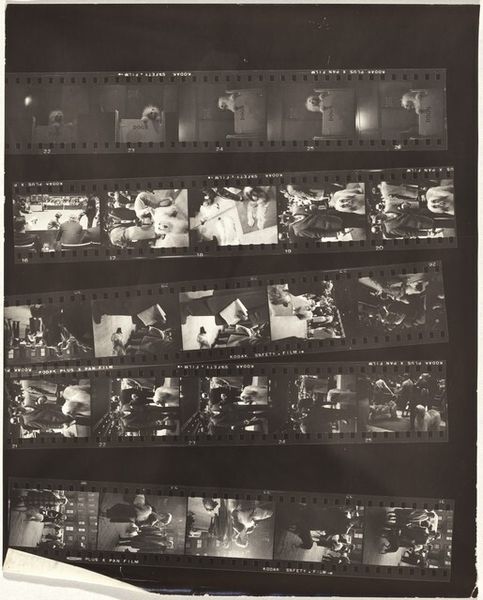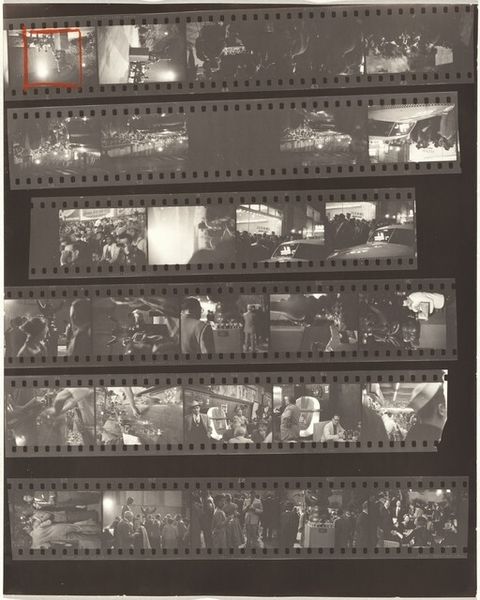
print, photography, gelatin-silver-print
#
film photography
# print
#
archive photography
#
street-photography
#
photography
#
photojournalism
#
gelatin-silver-print
#
pop-art
Dimensions: sheet: 25.2 x 20.2 cm (9 15/16 x 7 15/16 in.)
Copyright: National Gallery of Art: CC0 1.0
Curator: Check out this work by Robert Frank titled "Rock & roll--Alan Freed 9", made around 1957. It's a gelatin silver print showing several strips of film. Editor: My first thought? The texture! It's all grain and grit. Looks like a backstage pass into a world fueled by raw energy. Curator: Exactly! Frank's approach wasn't about polished perfection; it's about capturing the visceral experience. Look at how the film strip format itself echoes the flow and pace of a live event, or even the frenetic pace of production itself. Editor: And the light! The contrast seems intentionally pushed—almost blown out in places—calling attention to how photography can obscure or illuminate truths depending on use of materials and chemicals in its creation. It throws this wonderful veil of celebrity onto the performer on stage. Curator: Well, Freed, as a radio personality, was more than just a guy playing records. He's often credited with popularizing the term "rock and roll" and he became this larger than life promoter of a new cultural phenomenon. The way Frank documents the event, in terms of these material document, mirrors how rock 'n' roll itself was exploding out of post war youth cultures. Editor: So you're saying the multiple frames, the slightly blurry images… it all points to the sense of urgency and the cultural explosion that "Rock and Roll" triggered? Curator: Totally! It's a layered record. The material form becomes part of the message itself. Editor: Makes me wonder what sort of labor went into printing and reprinting. There were probably many "rejects" for a shot like this that were later reincorporated here to create one document. A little bit rock n' roll too, eh? Discarded takes that gain a cult following later? Curator: (chuckles) I like that! So, where are we now? Do we view this as just a photograph or something more? Editor: I feel like I've learned something more, I always forget how deeply imbricated art making processes can be in the context in which that object is presented! Curator: Me too! There are times I view images in a purely nostalgic light, but now, after looking at the production itself, I appreciate that Robert Frank also really pushed boundaries too!
Comments
No comments
Be the first to comment and join the conversation on the ultimate creative platform.
